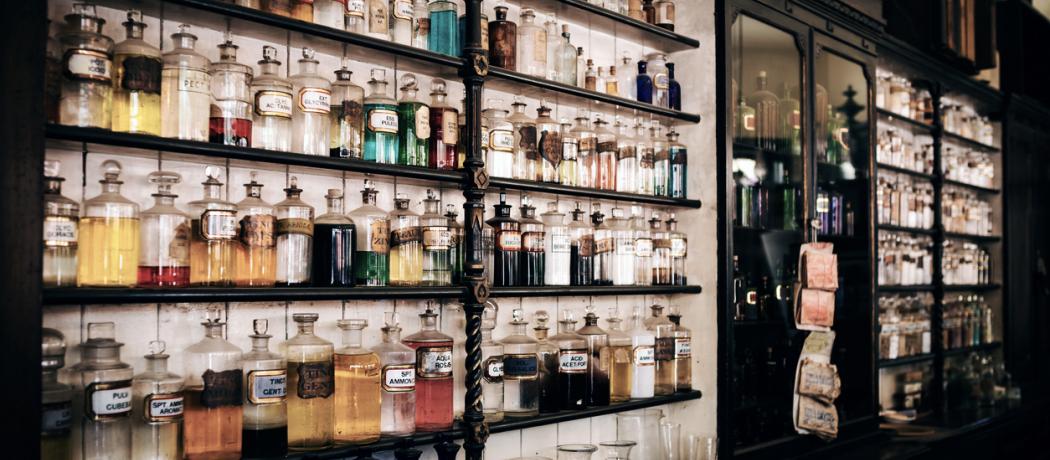In most Canadian provinces the second Monday of May is observed as a statutory holiday. It is a day to honor the memory of Queen Victoria (1819–1901) and her historical era of the mid-to-late 1800s. From a medical perspective, the Victorian era was been quite exceptional. Modern medicine may be attributed to discoveries made in those years as health and medical ideologies moved from humors to phrenology to anesthesia and antisepsis to what we now call the evidence-based practice of medicine.
In the Queen’s early years, health care was more or less provided to the general public by the Victorian pharmacies. Being able to access cures or remedies for illness was revolutionary for the public—even though most medications were based on old beliefs. Herbalists held an important role in informing doctors and pharmacists of the medicinal values of plants and their sources. Mixing the different ingredients took skill and pharmacies were equipped with various measuring and mixing devices. Common cures recommended by pharmacists included leeches—to suck out excess blood from the body. In general, many ideas about cures related to drawing badness out of the body. Plasters made of a blend of wax and lead, opium, frankincense, and other ingredients were sold in various shapes, to be applied to parts of the body to draw out excessive humors causing pain or illness, and concoctions were sold to purge the body of the unwanted humors. One ingredient used was antimony, which would cause severe vomiting and diarrhea believed to give the body a healthy clean up.
Medical thinking in early Victorian times revolved around miasmas (poisonous vapors in the air) as the cause of many ailments. One important medical discovery was made by Dr John Snow (1813–1858), who demonstrated that the devastating cholera epidemic in London was caused by contaminated water from a pump in the Soho district. His discovery led to government actions to provide clean water for the public, and sewage and garbage management systems in urban areas.
The Queen was essentially a well person; nevertheless, she had a huge health care staff of doctors, pharmacists, massage therapists, cuppers, midwifes, nurses, chiropodists, medical galvanists, and phrenologists. She gave birth to nine children, all delivered by a midwife while anxious obstetricians stood by in the next room. Prince Albert, the Queen’s much-loved husband, was heartily interested in bringing new medical care ideas into the palace. It is through his instigation that the Queen’s eighth and ninth children were born with the then most revolutionary anesthetic—Dr Snow administered chloroform by the drop method. It is rumored that the Queen’s recurrent abdominal cramps were treated with cannabis brought from India by Dr William Brooke O’Shaughnessy.
During the Queen’s life, advances in medicine such as the introduction of anesthesia, the discovery of germ theory, and the practise of antisepsis led to developments in surgical fields that in turn opened the door to huge advances in most fields of medicine of today.
Interestingly, the Queen was against women entering the medical field. Thirty years after her death in 1901, Oxford Medical School still offered separate dissection labs to male and female students. She also suffered periods of postnatal depression, and a long period of depression and social seclusion following the premature death of Prince Albert. She may also have suffered from a mild form of dementia close to her death. It is remarkable that 118 years since the Queen’s death, with all of our astonishing medical achievements, we are still struggling in medicine and in public life with mental health issues, specifically issues related to the current virtual epidemic of dementia.
—George Szasz, CM, MD
Suggested reading
Royal College of Physicians. Royal doctor’s diaries reveal intimate details of Queen Victoria’s personal life and health. Accessed 17 May 2019. www.rcplondon.ac.uk/news/royal-doctor-s-diaries-reveal-intimate-details-....
Simple History. Victorian medicine. Accessed 17 May 2019. www.simplehistory.co.uk/time-travel/victorian-medicine.
This post has not been peer reviewed by the BCMJ Editorial Board.

